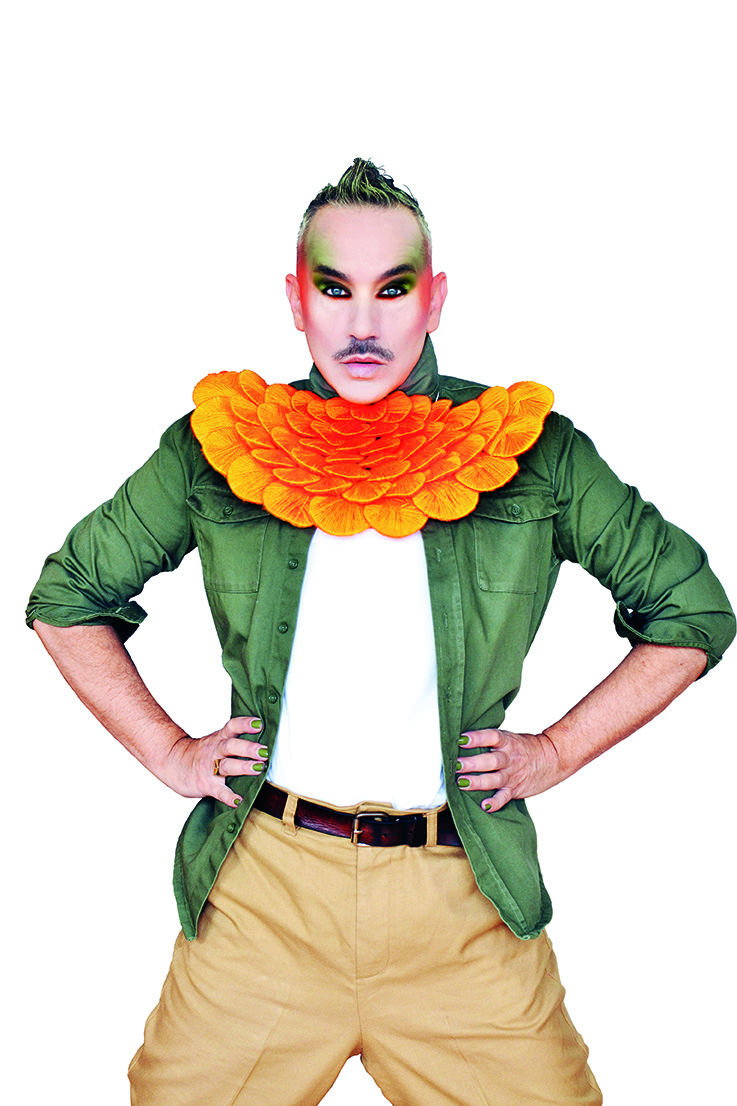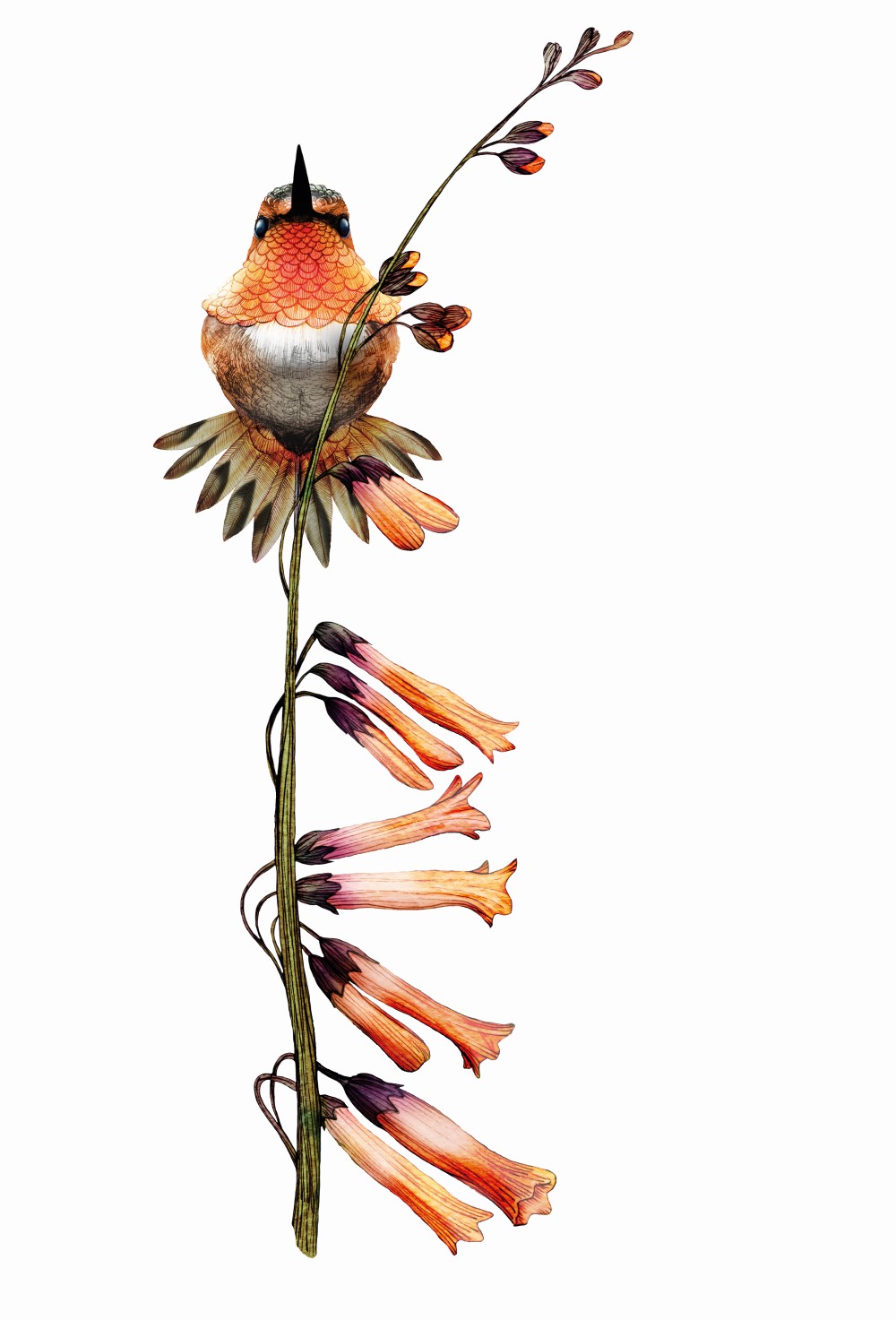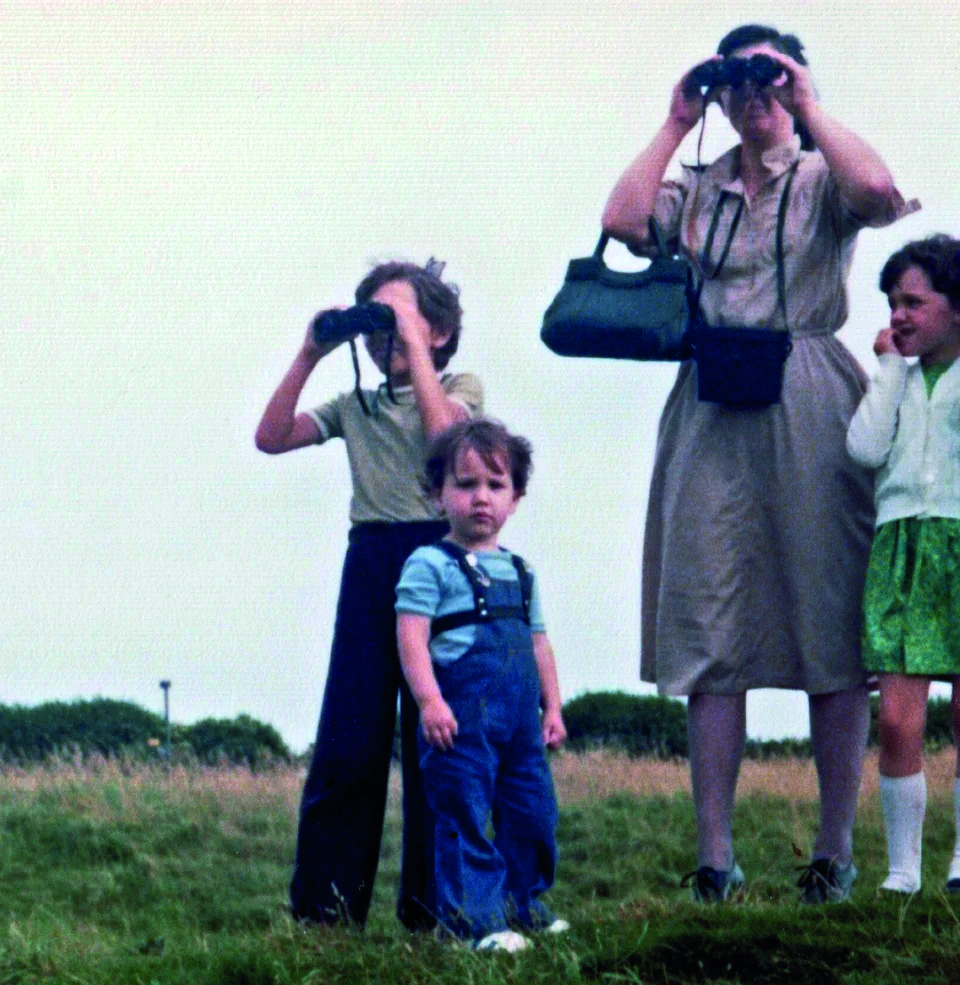Come fly with me
“It’s very hard to explain what I do until you see it. If I say, ‘I dress up as birds and take photographs,’ it sounds weird. It’s not until you see it that it makes sense.
“I love the fact that it’s absurd and a bit daft. I think of myself as a modern Edward Lear. He did really beautiful illustrations of birds. It’s this idea of being a British eccentric type that I’m performing.”
‘Birds Can Fly’ is what Paul Harfleet calls his “peculiar universe of birds, fashion and research.” The project, which sees him using makeup and clothing props to make himself resemble some of his favourite birds, is designed to highlight their beauty and raise awareness of endangered species.
Harfleet, who studied painting and fine art at the University’s Manchester School of Art and has had exhibitions in the UK and USA, developed Birds Can Fly during the COVID lockdowns of 2020, when his regular work as a graphic designer stopped. “I had no idea what I was going to do and was living on savings,” he recalled. “I started asking people on social media if they wanted me to draw a bird for them, and for the first few weeks of the pandemic, I was drawing one every day.”

More and more people began to request his drawings. Then, some asked if they could buy prints. To
meet demand, he developed a simple creative process. First, he drew in pencil before going over it in pen. Then, he scanned it to colour it digitally. The detailed reproduction of each bird’s distinctive
markings is informed by Harfleet’s regular visits to the Natural History Museum at Tring, which houses specimens of almost every species.
Realising his drawings could be a precious source of income, he set up an online print shop — a
venture that’s since expanded to sell ecological clothing and bags featuring
his work.
To promote the store, he hit on the idea that people respond to seeing and knowing the artist on
social media, and he began what he calls the ‘gentle referencing’ of birds — transforming himself with props, costumes and makeup designs to reflect the birds’ plumage
and characteristics — doing the photography himself, too.
Conservation
There is a serious side to Harfleet’s work. He has a keen interest in conservation, and some of his work also features in the book ‘Into the Red’ by the British Trust for Ornithology, which raises awareness of birds on the Red List (endangered UK species).
He hopes such efforts inspire others to take a similar interest. “Having this ability to show
birds in a fresh way invites people to explore birds and the threat they’re under,” Harfleet said.
Soon, a series of new social media connections took Birds Can Fly to the next level. He joined a Facebook group called the Self-Isolating Bird Club, run by TV presenter and naturalist, Chris Packham.
Packham regularly invited its 30,000 members to tune in and speak about birds and nature when,
like Harfleet, their own wings had been clipped by enforced isolation. Here, members could share stories, photographs and art inspired by birds and nature.
Harfleet began to share his ‘gentle references’ with the group, which were well received by fellow bird enthusiasts. The first was a photo of him as a flamingo, complete with pink jacket. The second was as a kingfisher resplendent in a blue coat and orange shirt. It was Harfleet’s response to a negative comment about the latter image of men wearing makeup that made people sit up and take notice.

He gave a considered, informed and articulate response, explaining that men and women had been painting their faces throughout the history of humanity.
People liked his reply, and it attracted a comment from Packham, who began to follow Harfleet’s regular posts closely.
He then appeared in a short film on the Packham-presented Winterwatch on the BBC, which Harfleet describes as a “huge career highlight” that opened up his work toa new audience.
Origins

But how did Harfleet get to where he is today?
From an early age, he had a passion for birds. An early photograph shows him with binoculars in hand (above), while his seemingly less-enthused siblings look on.
He was also encouraged by his grandparents, who shared his love of birds. And when he combined his interest with an emerging talent for art, he began his journey.
Coming to Manchester in 1990, he was drawn by the city’s legendary nightlife before enrolling on a
foundation course at Manchester School of Art. Recounting his time in Manchester, he said: “I could always draw, but I didn’t really realise I was an artist until I got to art school. I loved it. It enabled me to understand what an artist could be. It was invaluable, and I’ve been doing it ever since.
“I did my degree in painting, and then a masters in fine art, just to disassemble what I’d learned,” he
said. “I had been doing landscape oils, which became Rothko-esque. But in the later stages of my masters, I became more interested in conceptual work rather than painting, and I began to work with feathers and paint figurines of birds. I worked with words and languages and researched
why birds have the names they do.”
After graduating with First Class honours, Harfleet channelled his energy and talents into co-founding
Apartment, a project where artists showed their work in his Manchester council flat.
But it was his experiences as a gay man while living in the city that inspired his first major work, which was to bring him greater attention.
The Pansy Project began in 2005. This simple but hugely meaningful street art project was borne out of homophobic abuse Harfleet had faced in Manchester.
After three separate incidents in one day, he was compelled to respond in his own unique way. Some years after the incident, he planted pansies at the sites, took photographs, and named the project after the abuse that had happened there.
Harfleet recounted in an interview with The Guardian: “It took me a long time to work out how I could mark [the abuse] and what kind of flower I would use. I didn’t really like pansies, but I knew they were the obvious gay flower. It was a simple and peaceful way of confronting homophobia.”
Of this time, Harfleet told Met Magazine: “There was a real difference in my experiences. I had a great time in Manchester on the gay scene, but in day-to-day life, I’d get abused quite often. However, I do think that’s more to do with the time rather than Manchester itself.
“Whenever I spoke about the abuse I received, people were surprised. They’d say, ‘But you live
in Manchester, that’s got a gay scene. It’s where Queer as Folk is filmed.’
“I investigated [the abuse in my work] because I had experienced it in what is a liberal city. The Pansy Project began in Manchester, and it’s important that the history of it is in Manchester.”
The Pansy Project began to attract international attention following a mention on the popular TV show, Ru Paul’s Drag Race. He has since planted pansies worldwide in nearly 300 locations — from the Eiffel Tower to the White House.
The project has expanded into another medium. This time a picture book he wrote and illustrated for his seven-year-old self with the aim of challenging stereotypes in childhood.
Pansy Boy tells the story of a child who enjoys being around nature but faces bullying at school and decides to act. It was shortlisted for the Polari Book Prize in 2018, and Harfleet has visited schools across the UK, US and Canada, delivering workshops that explore the issues raised in the book.
Future
So, what does the future hold for Harfleet? Birds Can Fly has taken flight since the locked-down days of 2020. The online store has since evolved into a fascinating resource about the history of birds and conservation, along with his own blogs to accompany his artwork. Through fashion, makeup and
styling, he aims to educate and encourage an interest in ornithology.
“I discover more about birds, the colonialism of ornithology and who [the birds are] named after. All this has become an art in itself rather than just promoting the shop. It’s become a major focus,” he explained.
Harfleet is continuing to develop his work and has met with publishers. “They love it, but we don’t know where it would fit. [Birds Can Fly] is such a weird concept, but I think the Winterwatch
film really helped sum it up in such a brilliant way because you then understand it when you see it.”
Find out more about Paul's work here:
